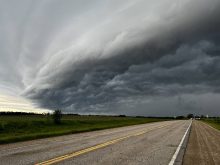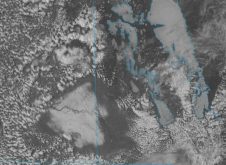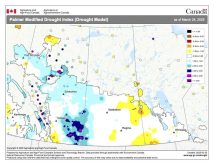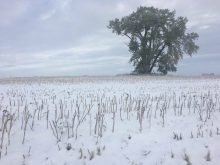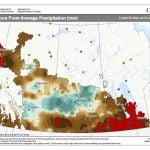Daniel Bezte has a special interest in farm weather, which he follows from a small farm near Winnipeg, where he has his own computerized weather station. He has been a regular contributor to other farm publications including the Farmers’ Independent Weekly and the Manitoba Co-operator. Daniel has a degree in geography, specializing in climatology, from the University of Winnipeg.
He welcomes questions and comments at [email protected]Frigid temperatures and insufficient snow cover in some areas of the U. S. Plains could be doing damage to the new hard red winter wheat crop, but experts said last month it was hard to gauge the extent of any problems.
Read Also

Thunderstorms and straight-line winds
Weather columnist Daniel Bezte discusses the strength of straight-line winds during a thunderstorm and the damage they can cause.
“It is too early to determine anything right now,” said Kansas State University extension agronomist Bill Heer.
Heer and other wheat experts said late-planted wheat that had poorly established root systems and lacked insulating snow cover or good soil moisture would be vulnerable to temperatures that dipped in many places well below zero degrees Fahrenheit in mid-December.
Western areas of Kansas might be particularly vulnerable, experts said.
Temperatures dipped to minus 12 degrees Fahrenheit (minus 25 degrees Celsius) in southwestern Kansas on Dec. 16 where there was little to no snow cover and to minus 8 degrees in northwestern part of the state, according to Mary Knapp, Kansas’ state climatologist.
Kansas State wheat specialist Jim Shroyer issued an industry report that said winterkill is possible if soil temperatures at the crown level (about one inch deep) get down to 10-12 degrees or less. But it only takes about an inch of snow to keep soil temperatures above the critical level.
“If the soil is dry and there is no snow cover, there may be the potential for winterkill, especially on exposed slopes or in low-lying areas, depending on the condition of the plants,” Shroyer said.
Mark Hodges, executive director of the Oklahoma Wheat Commission, said poorly established fields in Oklahoma were vulnerable.
“It is not an extreme concern but it is a concern,” said Hodges.


